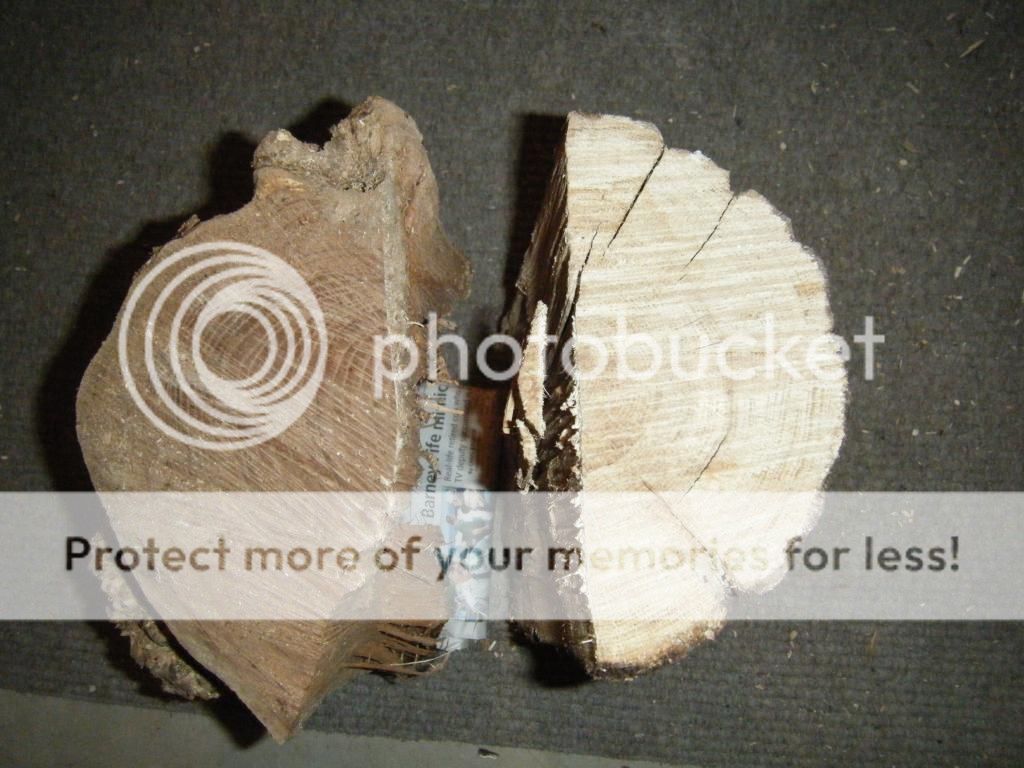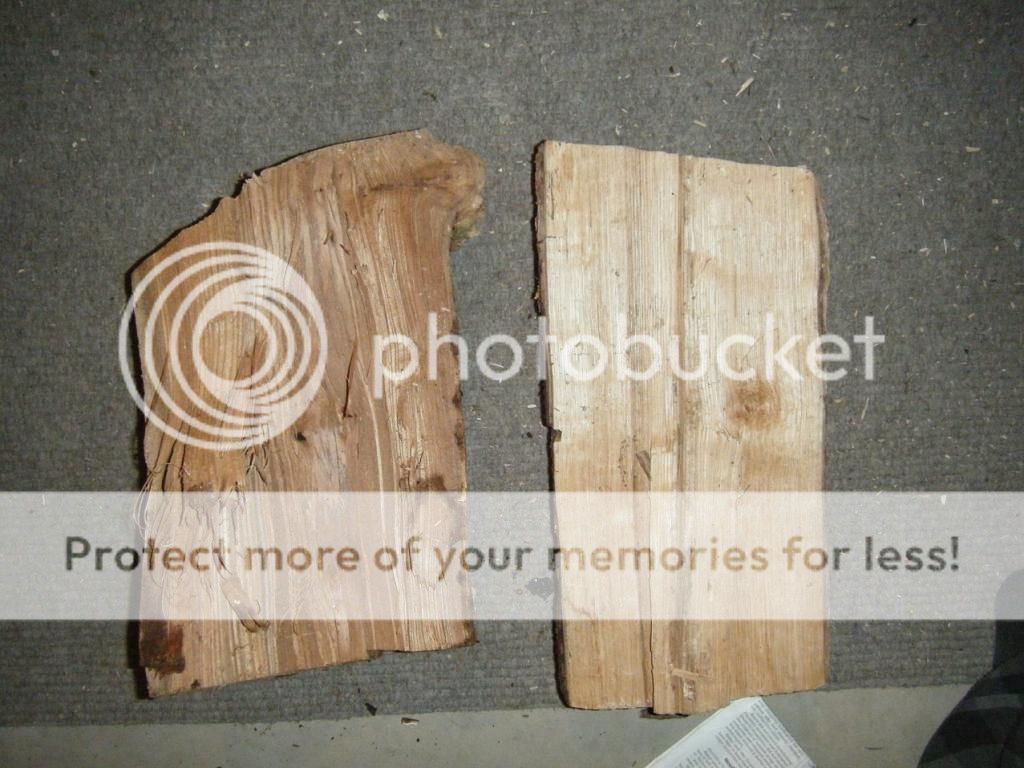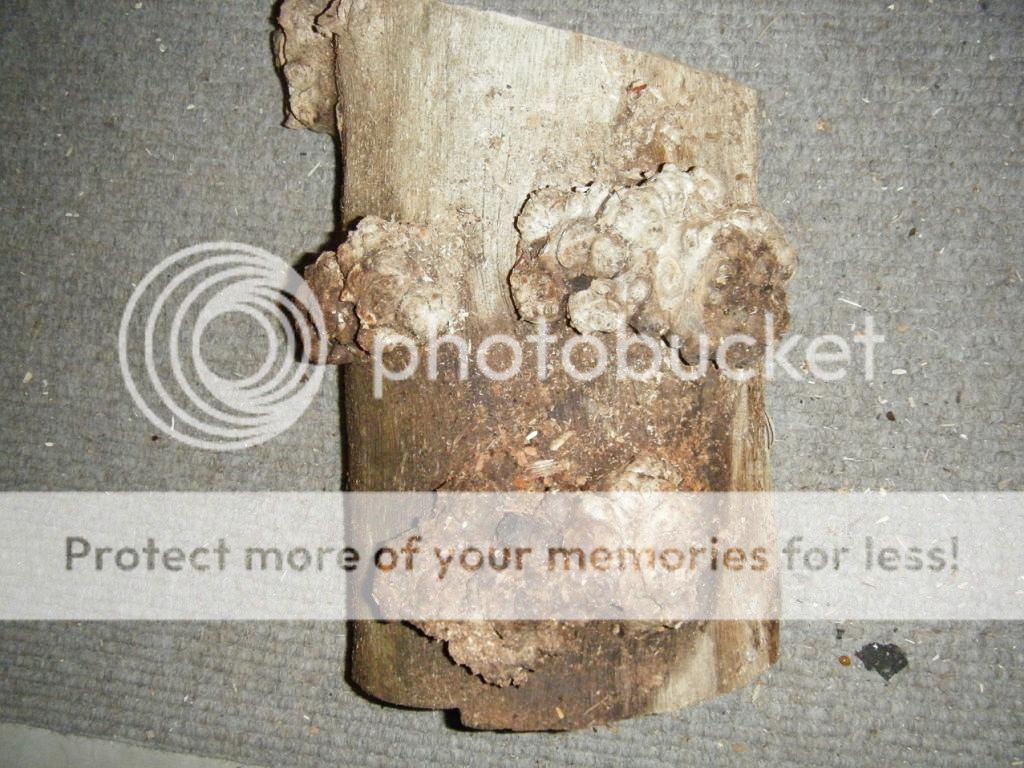I recently moved into a recently built house on the site of a dairy farm in the late 1800s with about 20 odd wooded acres. I stumbled upon a fallen tree that looked really old but petrified but I couldn't tell what it was(I'm picky with my firewood) so I didn't burn it. The tree was the bottom fifteen ft log and two large-ish main leads but no small branches or anything nearby that looked anything like it. Well one day I had to cut part of it out of my way to other firewood and it was just beautiful wood so I took some in and burned it. It burns great and for a long time.
Anyway
The first photo is the grain of the wood. For comparisons sake there is petrified white oak on the right so the unknown wood is the one on the left in all of the pictures.

This second picture is of the split of the unknown on the left and the white oak on the right.

The last one is the only possibly identifying features of the logs. They're all over the them.

My guesses are petrified american chestnut that died from the blight or some type of elm because I've seen those chancres on certain elms(though they're much smaller). I'm honestly stumped though because I don't believe that chestnut or elm burns very nicely and this stuff is like a charm.
Anyway
The first photo is the grain of the wood. For comparisons sake there is petrified white oak on the right so the unknown wood is the one on the left in all of the pictures.

This second picture is of the split of the unknown on the left and the white oak on the right.

The last one is the only possibly identifying features of the logs. They're all over the them.

My guesses are petrified american chestnut that died from the blight or some type of elm because I've seen those chancres on certain elms(though they're much smaller). I'm honestly stumped though because I don't believe that chestnut or elm burns very nicely and this stuff is like a charm.



